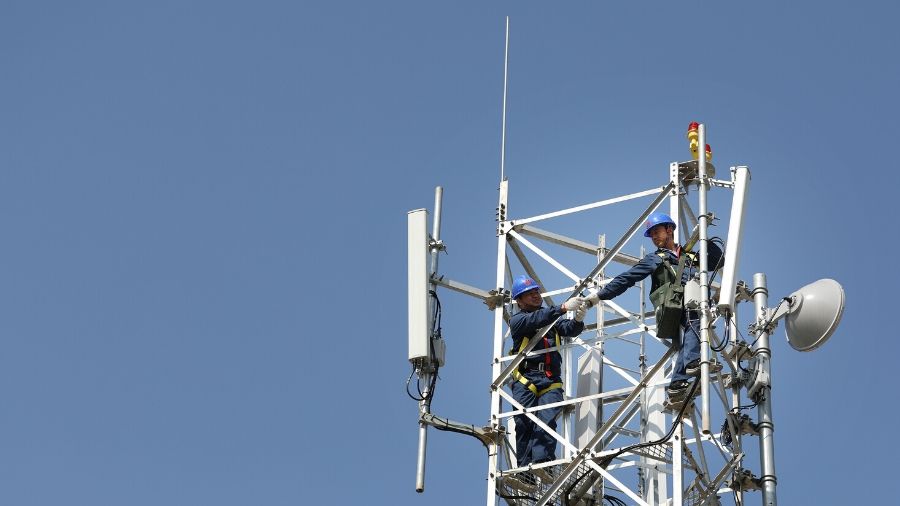How will the third UK lockdown affect mobile networks?
If this lockdown is anything like the original, mobile usage is very likely to rise

With the UK being thrust into a third national lockdown and working from home very much the reality, expectations are this could lead to a massive increase in demands for connectivity. As video chat, calls to check in with colleagues and shared online experiences rocket in popularity, networks will have to respond quickly to meet increased demand.
If this period of lockdown proves to be anything like the original, mobile usage is very likely to rise in order to support the expansion in working from home, but that extra mobile traffic will now occur in locations that operators haven’t traditionally accounted for.
- Here's our list of the best business smartphones right now
- We've built a list of the best mobile plans for businesses
- Check out our list of the best business tablets around
Kevin Hasley is Managing Director at RootMetrics
Network challenges
The usage pattern that will emerge in the next few weeks is not one that operators have witnessed prior to 2020. In normal circumstances, networks expect to handle high traffic in city centres and dense business districts during the conventional business hours of 9am-5pm. That makes sense as those areas are where the majority of mobile traffic would be found during the day. But the extra mobile traffic will now take place in suburban and residential areas, which operators haven’t previously made provision for.
During the first and second lockdowns, most of us spent more time working and learning from home, making us more reliant than ever on the telecoms services that help to keep us connected. This change in working and learning inevitably led to new network traffic patterns. Operators will now have to react to changes in consumer behaviour, such as the move away from shopping facilities located in the centre of urban areas towards supermarkets which are often situated on the outskirts of towns and cities.
Similarly, operators would previously have managed their networks to satisfy demand from tens of thousands of people gathered at large sporting or cultural venues. As Covid-19 has made it impractical for that kind of gathering to safely take place, operators will be reorganising their networks to respond to the subsequent changes in demand.
Infrastructure matters
Towers are well provisioned to handle network load under typical operating conditions, but resource planning is often built around conventional daytime population patterns, which have been hugely disrupted. People are now at home precisely when network engineers were planning to support their activity in office locations. Adjustments will be easier to make the second time around, based on the previous experiences, but now operators are in a corridor of uncertainty, trying to estimate fluctuating demand as restrictions change.
And it is not just network traffic that is an issue in connecting users in their homes. indoor mobile performance will become even more vital to users.
Are you a pro? Subscribe to our newsletter
Sign up to the TechRadar Pro newsletter to get all the top news, opinion, features and guidance your business needs to succeed!
The UK has typically used denser construction materials than the US, making it even harder for cell signals to penetrate indoors. And while all UK operators have low-band holdings, the bandwidth or channels available at this frequency range tend to be relatively small. All four of the major UK operators, however, have large holdings in the mid-band spectrum, which functions as a popular and effective compromise between data throughput and coverage.
Call volumes
Call volumes – both traditional and video using over-the-top (OTT) media services – are increasing and putting pressure on mobile networks. Users should be aware that call services, including Voice over Long-Term Evolution (VoLTE), are prioritised (above data services), although the uptick in volumes is also placing strain on call services. Since each cell tower can only deal with a finite number of requests at a time, it may become more difficult to make traditional calls. Research suggests that an increase in indoor voice calls may lead to more blocks than is usually the case.
Gaining more spectrum or building more towers isn’t a short-term procedure, so users shouldn’t expect this issue to be rectified overnight. On the other hand, users can be reassured by the fact that networks are set up to prioritise call services. However, this arrangement only applies to traditional (VoLTE) calls. If you’re using data services, such as Teams or WhatsApp, you won’t benefit from the same prioritisation.
Post-lockdown future
Although the current lockdown does not seem to have a definitive end date, three vaccines may be readily available, providing optimism that the enforced period of lockdown will not be long-lasting.
However long they prove to be, advances in 5G roll-out and upgrades to the 4G network over the last two years have better equipped us to be able to remain at home, work from there and help save lives. Signal strength could be improved in some areas, but steady progress has been made.
In Birmingham, Cardiff, and London, for example, our initial testing demonstrated that 5G offered significant increases in speed. 5G networks were primarily launched in the business districts which are now conspicuously empty, but 5G will inevitably expand and improve everyone’s mobile experience.
- Working from home: the mouse, monitor, keyboard and router you need
Kevin Hasley is Managing Director at RootMetrics